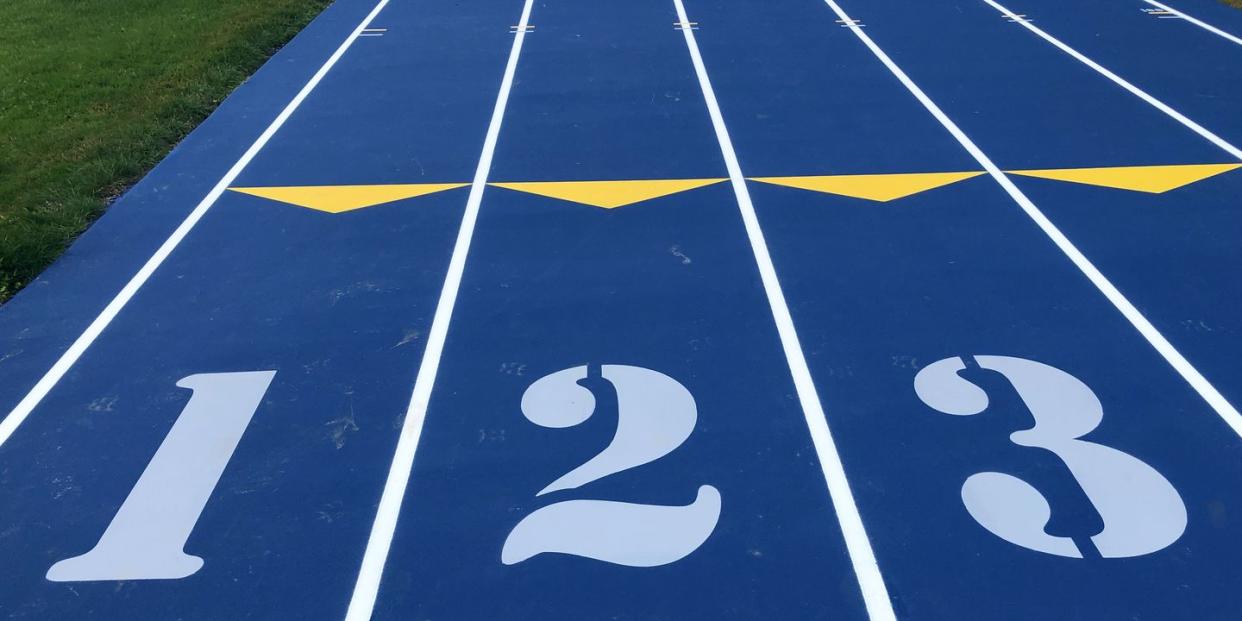A Tire Pavement Made With 60% Recycled Tires Could Save Thousands of Lives

A new pavement made with 60 percent recycled tires could save thousands of people who die from falls each year.
The U.S. alone produces nearly 250 million retired tires per year.
Recycled rubber composites have been used on playgrounds and tracks for decades.
Could a bouncier and more forgiving pavement save lives? Researchers think so. A huge group of researchers from dozens of universities and companies belong to an overarching project called SAFERUP, which stands for (take a deep breath) Sustainable, Accessible, Safe, Resilient, and Smart Urban Pavements.
In a press release, the group shares a World Health Organization fact: “Falls are the second leading cause of accidental or unintentional injury deaths worldwide, with adults older than 65 years of age suffering the greatest number of fatal falls.” Some number of falls will always be inevitable, and the researchers say replacing traditional concrete or pavement materials with something more forgiving could turn many of these fatal flaws into survivable ones.
To make a softer pavement, researchers have combined the building blocks of pavement with a recycled material. Blacktop roads are made by pouring a mixture of small gravel and hot bitumen tar onto the surface and then pressing it flat using a steamroller. To that traditional mix of rocks and tar, scientists added 60 percent by volume of shredded rubber tires. Because tar is technically a liquid, although an extremely viscous and slow-moving one, it can support the “give” of the bouncy tire pieces.
Sound familiar? For those with kids or who have recently been kids themselves, the SAFERUP pavement concept might seem a lot like the recycled paving materials already used as flooring for playgrounds. In that context, the tire pieces are called crumb rubber, which is a small shred of recycled automotive tires with all the textile bits removed.
There’s no doubt crumb rubber-based coatings can help protect children at playgrounds, and many training gyms and running tracks use some kind of rubber or crumb rubber for its decreased wear and tear on bones and joints.
But for crumb rubber aggregate surfaces, families and communities have wondered for a long time about the chemical safety of using recycled tires. Since 2016, the U.S. Consumer Product Safety Commission (CPSC) has been conducting an ongoing research project to study the safety of the chemical makeup of recycled tire paving. The CPSC says its studies have not revealed any chemical danger or evidence of health problems from using these materials.
Certainly the situation is different for children, who put things in their mouths or pick up any loose bits to stick in their pockets. But even for them, studies show rubberized playground surfaces are safer in terms of injury than any other surface. In fact, in one study from the U.K., bark mulch didn’t protect children much better than simply concrete.
If the goal in making better surfaces is pure harm reduction, rubber surfaces have a track record of achieving that goal. The SAFERUP project says its short-term goal is to train a new generation of pavers and other workers who will install and monitor these surfaces. The scientists envision safer pavements that also have sensors or other technology that will “notice” if people have fallen or there’s been a collision.
The benefit is twofold. Yes, protecting people who fall is a worthwhile goal in itself. "Thousands of lives could be saved by this pavement surface, both in the U.K. and other countries," participating researcher Viveca Wallqvist said in a statement. And if walking or cycling is made safer for people who are typically vulnerable to fall injury, researchers believe they’ll be more likely to get out and stay active.
You Might Also Like

 Yahoo News
Yahoo News 
